In recent times, the jewelry industry has witnessed a significant technological breakthrough in the form of lab-created or synthetic diamonds. You may be curious about what exactly lab-created diamonds are.
From a chemical and optical standpoint, lab-created diamonds are identical to natural diamonds. The main distinction lies in the time it takes for them to be formed, as well as the substantial price difference. So, what advantages do lab-created diamonds offer, and what are the potential drawbacks?
This article aims to provide you with comprehensive information about synthetic diamonds. So, without any delay, let’s delve into the subject.
DESIGN YOUR OWN ENGAGEMENT RING: START WITH A SETTING OR START WITH A DIAMOND. IT’S REALLY UP TO YOU!
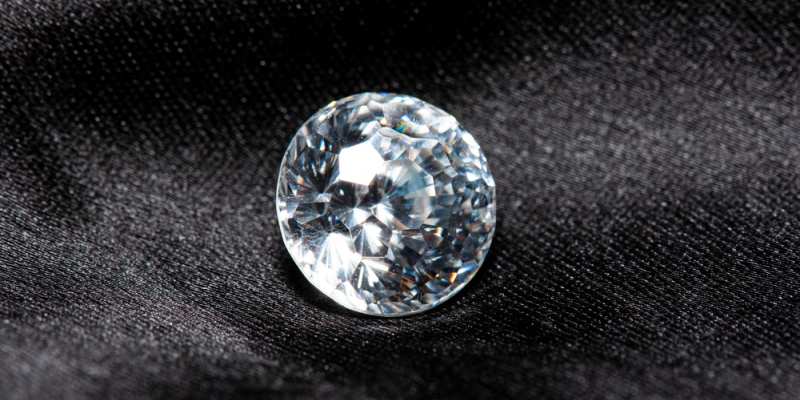
Lab-Created Diamonds: Introduction
Lab-created diamonds, also referred to as lab-grown diamonds, artificial diamonds, or synthetic diamonds, are man-made diamonds designed to replicate the properties of natural diamonds. These diamonds are created by simulating the natural process of diamond formation using carbon atom structures.
One notable advantage of lab-created diamonds is that they are typically priced lower than mined diamonds. The cost of lab-grown diamonds is decreasing over time, primarily because they do not hold any resale value and the demand for them is continuously fluctuating.
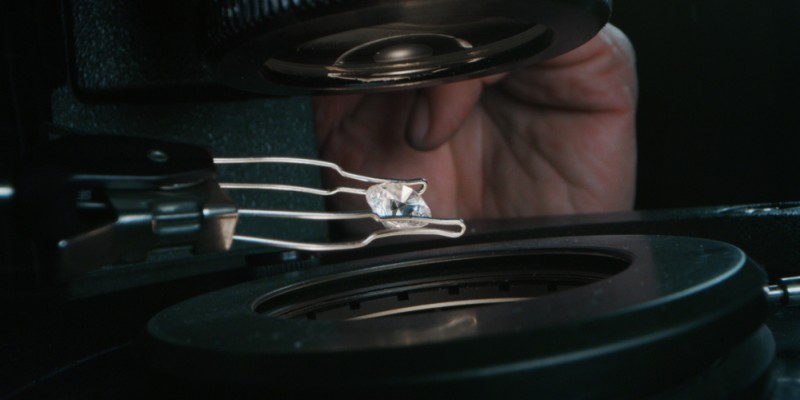
How Are Lab-Created Diamonds Made
Lab-created diamonds are produced by replicating the natural process of diamond formation. Natural diamonds are formed under high pressure and heat over billions of years, where carbon atoms transform into beautiful gemstones.
In the case of lab-grown diamonds, the same process is simulated but in an artificial and accelerated manner. It typically takes several weeks instead of billions of years. The process begins with a small diamond seed, which serves as the starting point. This diamond seed is placed in a specialized chamber that recreates the conditions found deep beneath the Earth’s surface.
The diamond seed is coated with pure carbon, and over time, it undergoes a transformation, resulting in a lab-grown diamond that is chemically and optically identical to a natural mined diamond.
There are two primary methods used for creating lab-grown diamonds: HPHT (high-pressure, high temperature) and CVD (chemical vapor deposition).
In the HPHT method, the diamond seed and surrounding carbon atoms are subjected to intense temperatures (around 1500 degrees Celsius) and high pressures (103400 Bar).
On the other hand, the CVD method involves lower pressure and heat. Instead, a mixture of chemical gases is introduced, which breaks down and solidifies into crystallized carbon.
Regardless of the method used, the outcome is the same: the production of a lab-created diamond from scratch within a matter of several weeks.
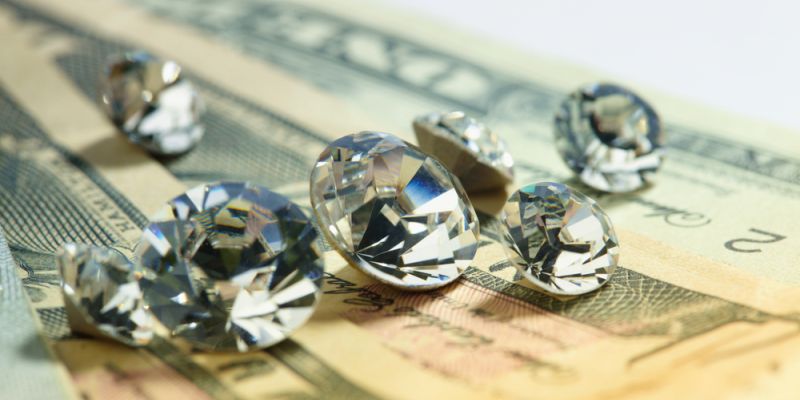
Lab-Created Diamond Pricing
Similar to natural diamonds, the prices of lab-grown diamonds can vary significantly. Synthetic diamonds can range from as low as $1,500 to as high as $60,000, depending on the quality of the stone.
Several factors influence the price of lab-grown diamonds:
- Shape: The round brilliant shape is the most popular and also the most expensive due to its exceptional brilliance and sparkle. Oval and Asscher cuts are also sought-after shapes that command higher prices.
- Cut: The cut of a diamond greatly affects its beauty. Diamonds with ideal cuts are more stunning and expensive compared to those with “good” or “very good” cut grades.
- Carat weight: The weight of the diamond, measured in carats, impacts its price. Heavier diamonds generally cost more.
- Color: Lab-grown diamonds are graded on a scale from D to Z. A D-colored diamond is colorless, while a Z-colored diamond has a noticeable brown or yellow tint. Diamonds with better color grades tend to be more expensive. However, for a balance of value and appearance, diamonds in the G to J color range are recommended as they still appear colorless to the naked eye and cost less than D, E, and F diamonds.
- Clarity: Clarity refers to the presence of inclusions and blemishes in a diamond. Diamonds without visible inclusions command higher prices. It is advisable to search for diamonds in the VS1 or VS2 clarity grades, as they are eye-clean and more affordable than FL or VVS stones.
- Certification: The certification itself does not affect the price of a diamond but provides verification of its quality. It is recommended to obtain a certification for lab-grown diamonds. The International Gemological Institute (IGI) certification is often preferred for lab-grown diamonds as it provides comprehensive grading and ensures the authenticity and quality of the synthetic diamond.
Considering these factors, selecting a lab-created diamond with the desired shape, cut, carat weight, color grade, and clarity grade, along with a reputable certification, will help ensure a fair price and quality assurance.
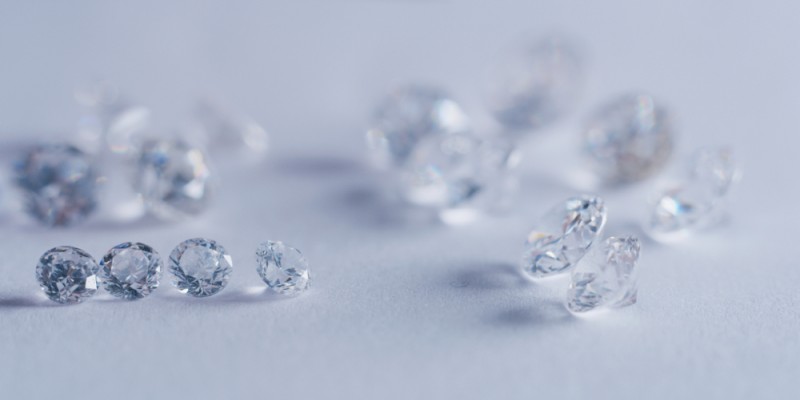
Lab-Created Diamond Certification: What To Watch For
Diamond certificates, also known as grading reports, can vary among different grading entities, making it challenging to compare the prices of lab-grown diamonds based solely on the certification.
When selecting a lab-grown diamond, it is important to choose one with a reputable certificate, but it is also advisable to review the stone personally.
The Importance of Detailed Grading
Similar to natural diamond certification, grading entities provide single grades for factors like clarity and color. The International Gemological Institute (IGI) offers detailed grading reports for lab-grown diamonds.
When shopping for lab-grown diamonds, comparing IGI grading reports can help determine which stone offers better beauty and value for the price.
Subjectivity in Diamond Grading
Diamond grading is subjective, and there is no central organization that defines the exact appearance of a particular clarity or color grade in a diamond.
If different grading labs consistently assign different grades, such as VS1 or VS2, for the same clarity grade, it is acceptable as long as it is consistent within that lab.
However, even when a grading entity is consistent, it does not guarantee complete trustworthiness. It is important to be cautious when purchasing a lab-grown diamond with a weak certificate at a higher price point.
Comparing Diamonds with the Same Certificate
To ensure a fair comparison, it is recommended to compare lab-created diamonds graded by the same lab, such as IGI. Evaluating diamonds assessed by the same third-party organization allows for a more accurate comparison.
Considering Price Alongside Certification
Regardless of the grading report, it is crucial to thoroughly evaluate the price of the lab-grown diamond. The price should align with the actual beauty and quality of the stone.
If uncertain about the pricing of a lab-grown diamond, seeking the opinion of an expert before making a purchase can provide additional assurance.

Why Is IGI Certification The Best For Lab-Created Diamonds
The International Gemological Institute (IGI) has established itself as a prominent gem laboratory, particularly favored by major jewelry chains in the US and Canada.
IGI is known for its efficiency and lower certificate prices, which benefits diamond sellers. However, this may not necessarily be advantageous for end consumers.
For natural diamonds, we do not recommend relying solely on IGI grading, as it tends to be less stringent and inconsistent compared to the Gemological Institute of America (GIA). While the GIA provides comprehensive grading reports for lab-created diamonds, the availability of such reports is limited.
The GIA holds the highest reputation as a diamond grading entity worldwide, offering consistent assessments that provide confidence when purchasing natural diamonds. However, there are currently only a limited number of GIA-certified synthetic diamonds available.
IGI provides specific grades for lab-grown diamonds, including clarity and color, which are widely recognized in the lab-created diamond market. This allows for comparisons between stones and ensures that you receive the quality you expect.
By choosing an IGI-certified lab-grown diamond, you can have peace of mind, knowing that the quality of your stone aligns with the claimed standards.
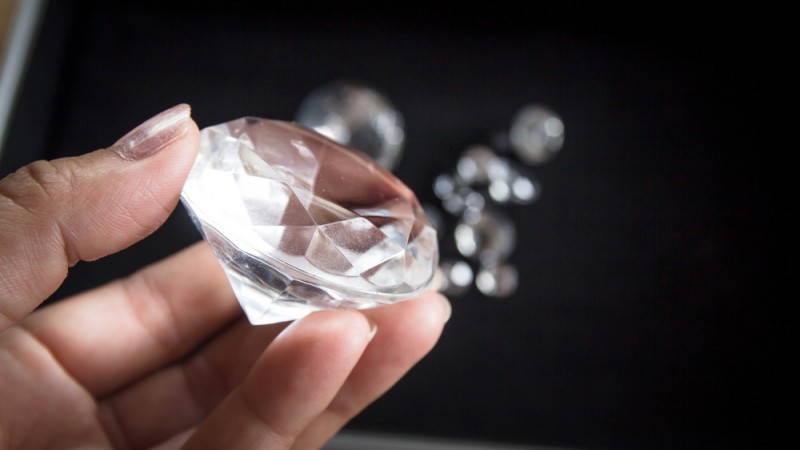
Lab-Created Diamond Color Scale Chart
When comparing lab-grown diamonds, it is crucial to have a certificate for each stone you consider. This ensures that you know exactly what you are evaluating.
The International Gemological Institute (IGI) uses a color grading scale from D to Z for lab-created diamonds:
Colorless: D is the highest grade, representing diamonds with almost no color, even under magnification. E and F grades are visually indistinguishable to the naked eye. Only an expert can detect the subtle differences between these grades.
Nearly Colorless: Diamonds with color grades G to J appear mostly white to the naked eye and have minimal color. They have a similar visual appearance to D to F grade diamonds but are generally priced lower.
Faint Tint: Lab-grown diamonds in the K to M range exhibit a slight yellow tint when viewed with the naked eye. Some individuals prefer these diamonds, especially when set in a yellow gold ring.
Very Light Tint: Diamonds in the N to R color range have a noticeable brown or yellow tint, which makes them more affordable. We do not recommend purchasing diamonds in this color range.
Light Tint: Lab-created diamonds in the S to Z color range have a distinct brown or yellow tint. Similar to the previously mentioned color range, we do not recommend selecting diamonds in this range.
By understanding the color grading scale and considering your preferences, you can make an informed decision when choosing a lab-grown diamond.
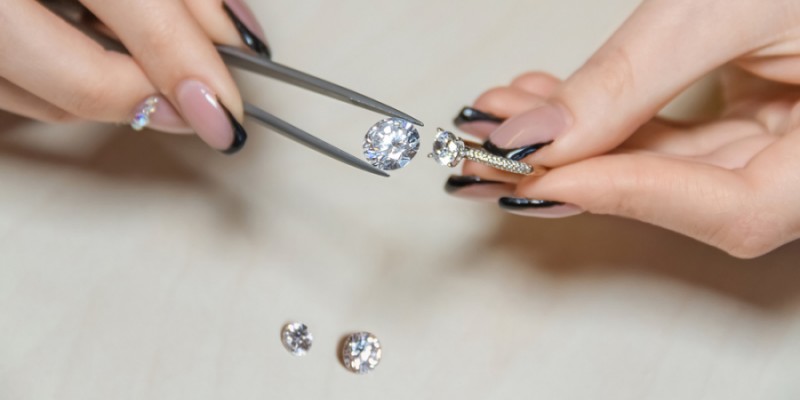
How To Tell The Difference Between Natural And Lab-Created Diamonds
Distinguishing between natural diamonds and lab-created diamonds is challenging, even for expert gemologists, without specialized equipment. The most reliable method to differentiate them is by examining the grading report.
When assessing a diamond’s origin, gemologists utilize magnification to inspect the nature of inclusions. The inclusions found in natural diamonds exhibit slight differences from those in lab-grown diamonds.
Occasionally, disparities in how the stones reflect light may be observed between natural and synthetic diamonds. However, in general, when comparing a lab-created diamond to a mined diamond, it is difficult to discern any noticeable distinctions.

Why Choose A Lab-Created Diamond
In recent years, diamond mining companies have made some progress in adopting more socially and environmentally responsible practices. However, compared to mining, growing diamonds in a laboratory has a significantly lower negative impact on the planet.
The extraction of a single 1-carat diamond requires the removal of approximately 250 tonnes of earth, which can result in deforestation and the destruction of local ecosystems near the mining site. While some countries have implemented environmental regulations for mining operations, others lack such regulations entirely.
One major concern for diamond buyers is the issue of conflict diamonds, also known as blood diamonds. These diamonds are extracted in war zones to finance rebel militias engaged in civil conflicts. Fortunately, the Kimberley Process Certification Scheme, established in 2003, has played a crucial role in eliminating most blood diamonds from the market.
The Kimberley Process requires member countries to implement measures that certify diamonds as “conflict-free” and prevent their entry into the legitimate diamond trade. However, this system has faced criticism for its failure to address poor working conditions, including issues related to health, safety, and child labor in diamond mines.
On the other hand, when purchasing lab-grown diamonds, buyers can have complete confidence that no workers were subjected to harsh conditions. Additionally, lab-created diamonds provide assurance that their purchase did not contribute to any form of violence or conflict funding.
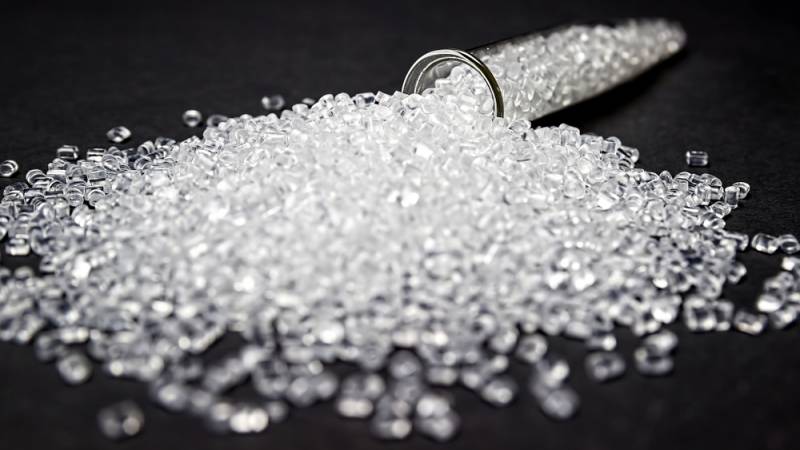
What Are The Downsides Of Lab-Created Diamonds
Although lab-created diamonds offer significant cost savings and ethical advantages, it’s important to acknowledge that synthetic diamonds may not appeal to everyone.
For some couples, the allure of mined diamonds lies in their historical significance and the fact that each diamond is truly one-of-a-kind, shaped by the forces of nature over billions of years. In comparison, lab-created diamonds, which can be produced in laboratories within a few weeks, may not carry the same romantic appeal.
Moreover, misconceptions surrounding lab-created diamonds are still prevalent since they are a relatively new phenomenon in the world of jewelry. Couples may have concerns that their family and friends might perceive their choice as opting for a cheap or “fake” diamond.
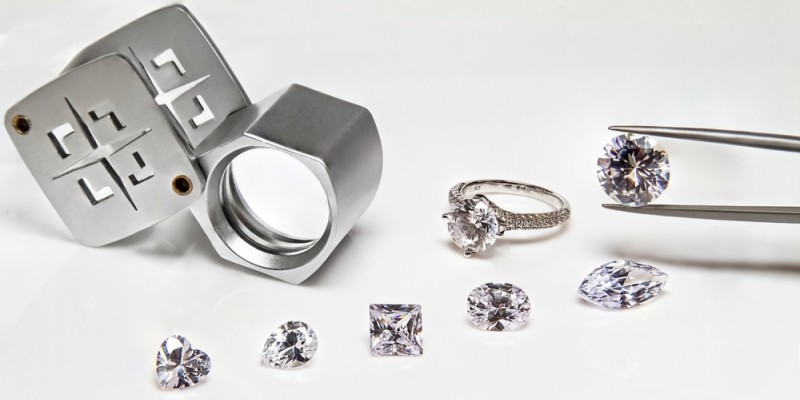
Conclusion
What exactly are lab-created diamonds?
Lab-created diamonds, also referred to as synthetic or lab-grown diamonds, possess the same chemical and optical characteristics as natural diamonds. The primary distinction lies in the time it takes for them to form:
Natural diamonds undergo a process that spans billions of years deep within the Earth’s crust, subjected to intense heat and pressure. In contrast, synthetic diamonds are created within a few weeks in controlled laboratory conditions that mimic the natural diamond formation.
Another notable contrast between natural and lab-created diamonds is their pricing. Lab-grown diamonds are significantly more affordable than their natural counterparts.
When acquiring a lab-created diamond, it is important to ensure that it comes with proper certification. Equally important is to carefully examine both the certification and the stone itself before making your purchase.


